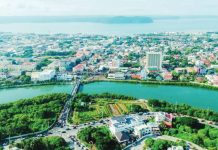
CRANES tower over Iloilo City’s skyline, new subdivisions sprawl across once-quiet barangays, and commercial hubs are rising fast in Bacolod, Roxas, and Kalibo. Western Visayas is in the middle of a construction boom — a sign of progress, but also a potential source of peril if development outpaces safety. The recent 6.9 magnitude earthquake that jolted the Visayas is a reminder that every new building in this region must not only stand tall but also stand strong.
The West Panay Fault runs quietly beneath this growth, stretching across Iloilo, Antique, Capiz, and Aklan. Its presence is not a geological trivia — it is a ticking reality. The 1948 “Lady Caycay” earthquake, which devastated Panay Island with a magnitude of 7.8, showed how vulnerable our structures can be when construction standards fail to anticipate nature’s force. As Western Visayas urbanizes, we cannot afford to repeat the mistakes of the past: beautiful buildings on weak foundations, shortcuts taken in the name of savings, and lax enforcement of safety codes.
Local governments and regulatory bodies must treat this moment as a turning point. Building permits should not be granted unless developers comply fully with updated seismic standards and zoning laws. Regular inspections must be mandatory, not optional, and violations should carry real consequences — including revocation of licenses and blacklisting of erring contractors. The experience of Iloilo’s infrastructure sector, where questions over project quality and accountability have repeatedly surfaced, emphasizes why transparency and engineering integrity are not negotiable.
Equally urgent is the need to strengthen zoning laws. Urban growth must be guided, not chaotic. No school or housing project should rise along known fault lines or on unstable ground. The rush to attract investors must not compromise long-term safety. Development that ignores hazard maps and environmental risks is not development at all — it is a future disaster waiting to happen.
Urban resilience is an engineering concern and more – it is a governance issue. The region’s mayors, governors, and councilors must view every building, bridge, and road as a moral responsibility to safeguard lives. Engineers must refuse to sign off on substandard plans. The public must learn to demand proof of safety, not just aesthetic appeal. After all, in the next earthquake, it will not be the blueprints or budgets that matter — it will be whether our buildings can protect the people inside them.
The transformation of Western Visayas into a modern, thriving region must rest on one unshakable foundation: safety. Every peso spent on compliance, retrofitting, and enforcement today is an investment in the survival of our cities tomorrow. Progress that collapses under its own weight is not progress at all.







